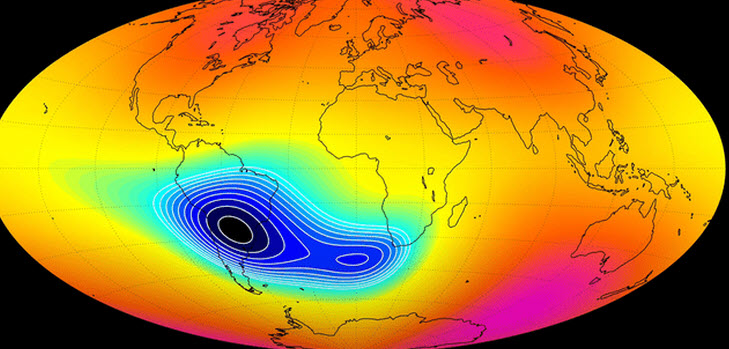The South Atlantic Anomaly (SAA), a region where Earth’s magnetic field is weakening, extends across South America and the southern Atlantic Ocean.
Recent findings indicate an increase in its size, with the U.S. National Oceanic and Atmospheric Administration (NOAA) reporting a 5% westward expansion over the past three years as of January 2023.
The anomaly’s highest intensity covers Argentina, Brazil, Paraguay, and Uruguay, but it will eventually impact Bolivia, Chile, Peru, and other regional countries.

The SAA’s presence allows space radiation to penetrate closer to Earth’s surface, which can affect both low-orbit technology and organisms.
Since the 1980s, satellite malfunctions have been attributed to the SAA, including the notable loss of Japan’s Hitomi probe in 2016.
In 2010, astronaut Terry W. Virts experienced a visual disturbance caused by radiation impacting his optic nerve when passing through the anomaly, later developing skin cancer.
The Earth’s magnetic field, responsible for protecting the planet from space radiation, is generated by the planet’s liquid outer core.
This system’s variables, including the magnetic axis not aligning with Earth’s rotation axis, are believed to contribute to the SAA.
Research suggests similar anomalies have occurred in this region for 11 million years.
Continued monitoring of the anomaly is underway via initiatives like the European Space Agency’s Swarm satellite constellation.

